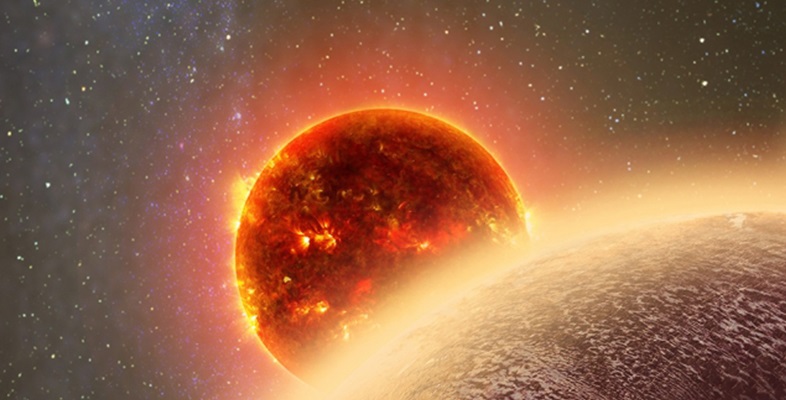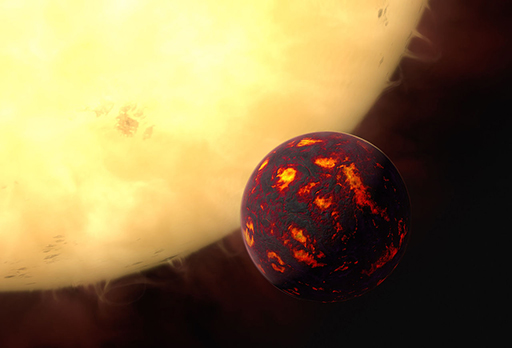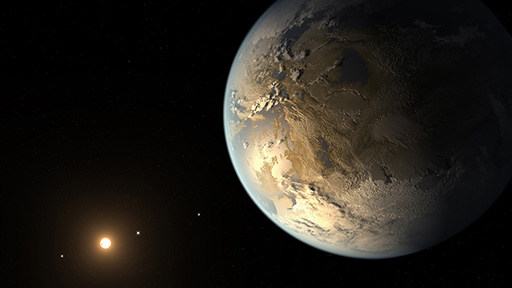4.2 Life on strange worlds
Of course, planets like the TRAPPIST planets and Proxima Centauri b orbit stars that are very different from the Sun. To receive enough starlight to be in the habitable zone, planets need to be much closer to cooler stars. You’ve already met some of the consequences of this for Proxima b.
Tidal locking means that one side permanently faces the star and experiences permanent day, whilst the other side experiences permanent night. We don’t know how well life would be able to cope with this sort of environment. The temperature distribution on this kind of planet would be very different from Earth, even if the planet received the same amount of light overall.
It is thought that one very hot super Earth, a planet called 55 Cancri e, may have a dayside surface that is molten lava, due to the extreme temperatures (Figure 10). In Week 7 you met the strange planet Kepler-1520 b, with the possibility of the rocky surface facing the star being turned directly to vapour in a process called ‘sublimation’.
There is still hope for some close-in planets though. The Earth spins on its axis, but another reason temperatures across our planet don’t vary that much is because the atmosphere and the oceans are fluids which can move around the Earth. If a tidally locked planet has a thick enough atmosphere, strong winds could distribute heat around both hemispheres.
It’s not just tidal locking that could be problematic for cool stars. As you’ve already seen with Proxima b, any aliens would also be very vulnerable to stellar flares which might physically strip away the planet’s protective atmosphere.
So, life on a planet orbiting close by a cool star could be in for a rough ride, and if we want to find alien life that resembles life on Earth we might be better off looking for Earth twins rather than Earth cousins. These can be rather tricky to find, as you discovered in Week 6, but in the not-too-distant future new space telescopes will be performing this exciting work.


